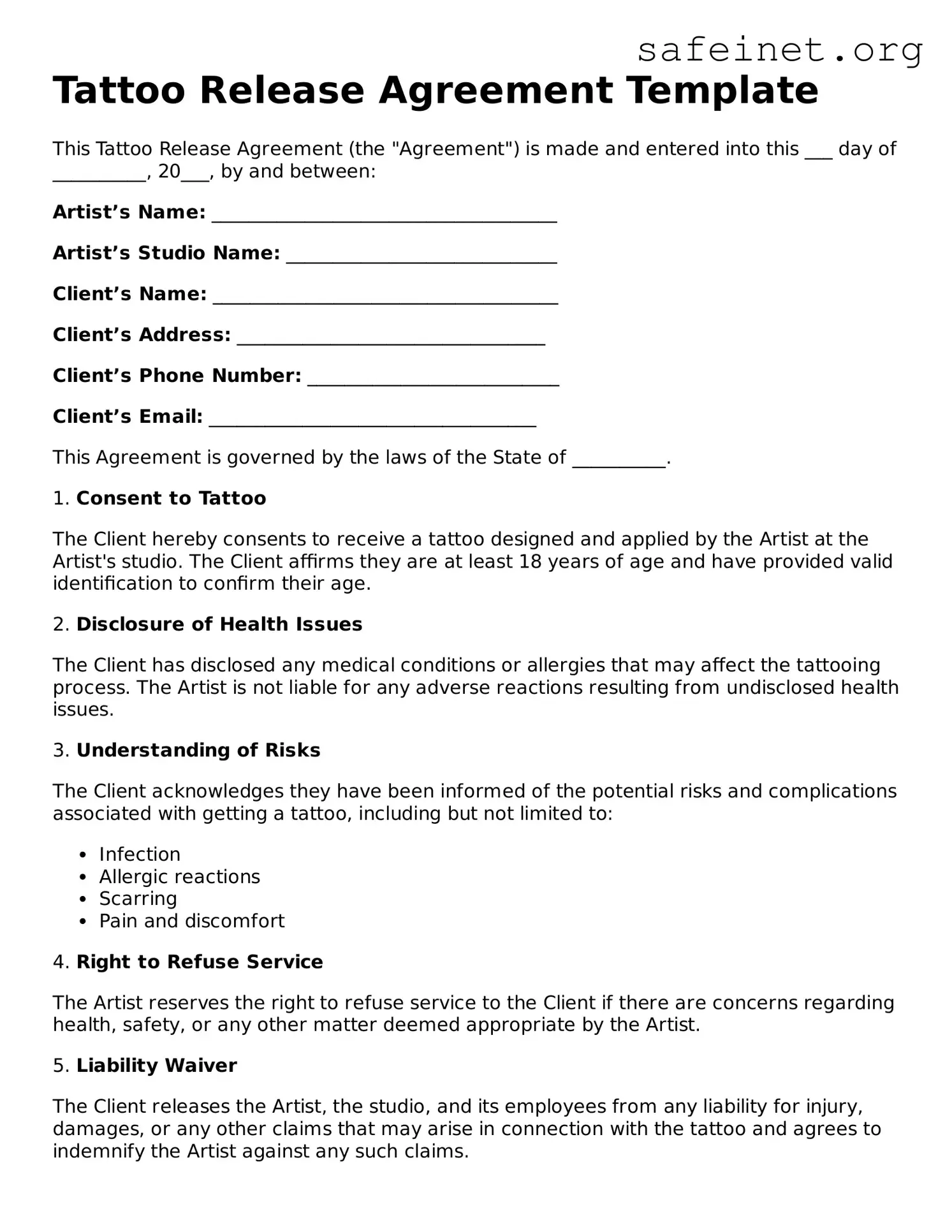Tattoo Release Agreement Template
This Tattoo Release Agreement (the "Agreement") is made and entered into this ___ day of __________, 20___, by and between:
Artist’s Name: _____________________________________
Artist’s Studio Name: _____________________________
Client’s Name: _____________________________________
Client’s Address: _________________________________
Client’s Phone Number: ___________________________
Client’s Email: ___________________________________
This Agreement is governed by the laws of the State of __________.
1. Consent to Tattoo
The Client hereby consents to receive a tattoo designed and applied by the Artist at the Artist's studio. The Client affirms they are at least 18 years of age and have provided valid identification to confirm their age.
2. Disclosure of Health Issues
The Client has disclosed any medical conditions or allergies that may affect the tattooing process. The Artist is not liable for any adverse reactions resulting from undisclosed health issues.
3. Understanding of Risks
The Client acknowledges they have been informed of the potential risks and complications associated with getting a tattoo, including but not limited to:
- Infection
- Allergic reactions
- Scarring
- Pain and discomfort
4. Right to Refuse Service
The Artist reserves the right to refuse service to the Client if there are concerns regarding health, safety, or any other matter deemed appropriate by the Artist.
5. Liability Waiver
The Client releases the Artist, the studio, and its employees from any liability for injury, damages, or any other claims that may arise in connection with the tattoo and agrees to indemnify the Artist against any such claims.
6. Photo Release
The Client grants permission for the Artist to take photos of the tattoo for the purpose of portfolio, advertising, and promotional use. The Client understands that photos may be shared on social media or the Artist's website.
7. Entire Agreement
This Agreement constitutes the entire understanding between the parties and supersedes any prior agreements or understandings, whether written or oral.
By signing below, the Client acknowledges that they have read, understood, and agree to the terms outlined in this Agreement.
Client's Signature: _______________________________
Date: ____________________________________________
Artist's Signature: _______________________________
Date: ____________________________________________
